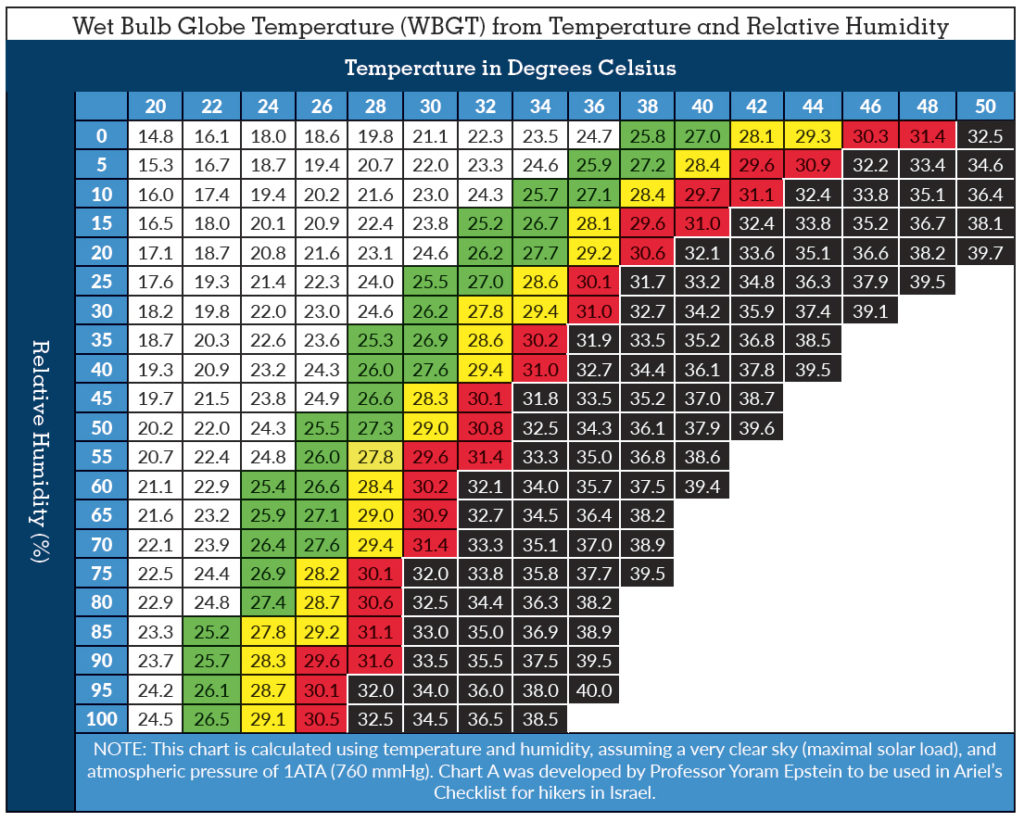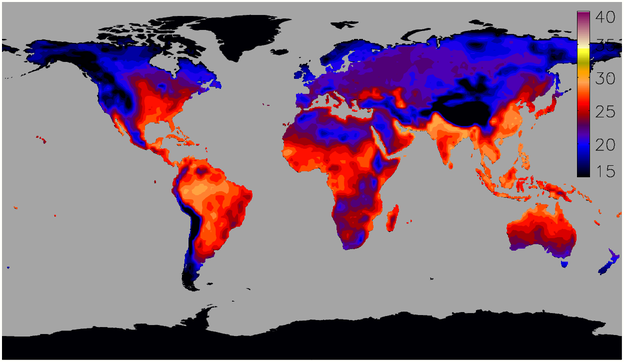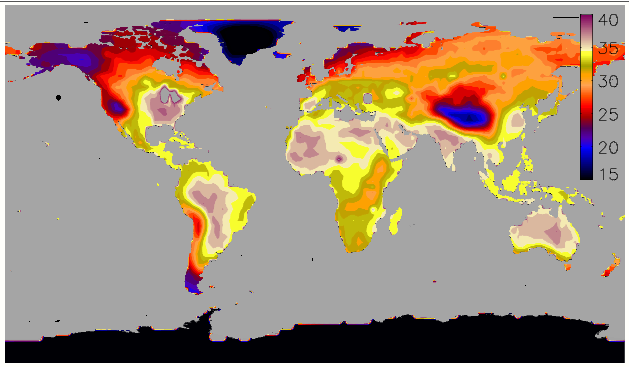Temperature/humidity over which we cannot exist
There is a temperature/humidity threshold over which human life even at rest, isn't possible. It's 35°C at 100% RH, according to The Economist . The limit to what conditions we can live is can be measured with wet-bulb temperature. When it goes above 35° we cannot dissipate heat from our bodies fast enough, so we start to overheat. The temperature is measured with a thermometer wrapped in wet cloth, but can also be calculated/approximated from heat, humidity, sunlight and air pressure:
The wet-bulb temperature is probably not a very good predictor of the "feels-like" temperature for most common conditions, which is why it is not used for this. However, it can be used to establish an absolute limit on metabolic heat transfer that is based on physical laws rather than the extrapolation of empirical approximations. That is why we focused on it instead of the usual measures.
See: What is Wet Bulb temperature?
The conditions under which humans cannot exist even in permanent shade, correspond pretty well to the bottom right empty white area in the chart below from https://arielschecklist.com/wbgt-chart/ :

![]() Click to view full-size image… — Size: 221.1 kB
Click to view full-size image… — Size: 221.1 kB
The reason they list temperatures above 35°C wet-bulb in the chart earlier, is I believe because they also factor in radiation from the Israeli sun, that is you're not in the shade. Obviously this is approximate, I'm not a specialist, but this chart for hikers seems quite handy. The black area indicates forbidden conditions for even healthy & relatively fit hikers. Go to their web site to get full information!
Calculate the wet-bulb temperature: http://www.climatechip.org/heat-stress-index-calculation
Today the highest wet-bulb temperatures recorded in the wild, are around 31° C. If we get up to 35°C or higher in some areas, those areas are likely to be depopulated.
The maths is simple: a 4°C increase in wet bulb values creates intolerable outdoor conditions, even in the shade in some areas. The Amazon and parts of India would be first, with northern Australia and other regions with very humid summers not too far behind. Simulations of warmer climates show that this happens if the average global surface temperature rises by 6°C
See: Heat Stress in a Warming World.
Here are maps showing max heat-bulb temperatures today, and if warming goes up 10 degrees Celsius. These images published in:
Sherwood, S. C. and M. Huber, An adaptability limit to global warming due to heat stress, Proceedings of the National Academy of Sciences, Vol. 107, 2010, 9552-9555, doi:10.107/pnas.0913352107. Reprint
Pictures taken from here.

![]() Click to view full-size image… — Size: 373.3 kB
Click to view full-size image… — Size: 373.3 kB

![]() Click to view full-size image… — Size: 76.8 kB
Click to view full-size image… — Size: 76.8 kB